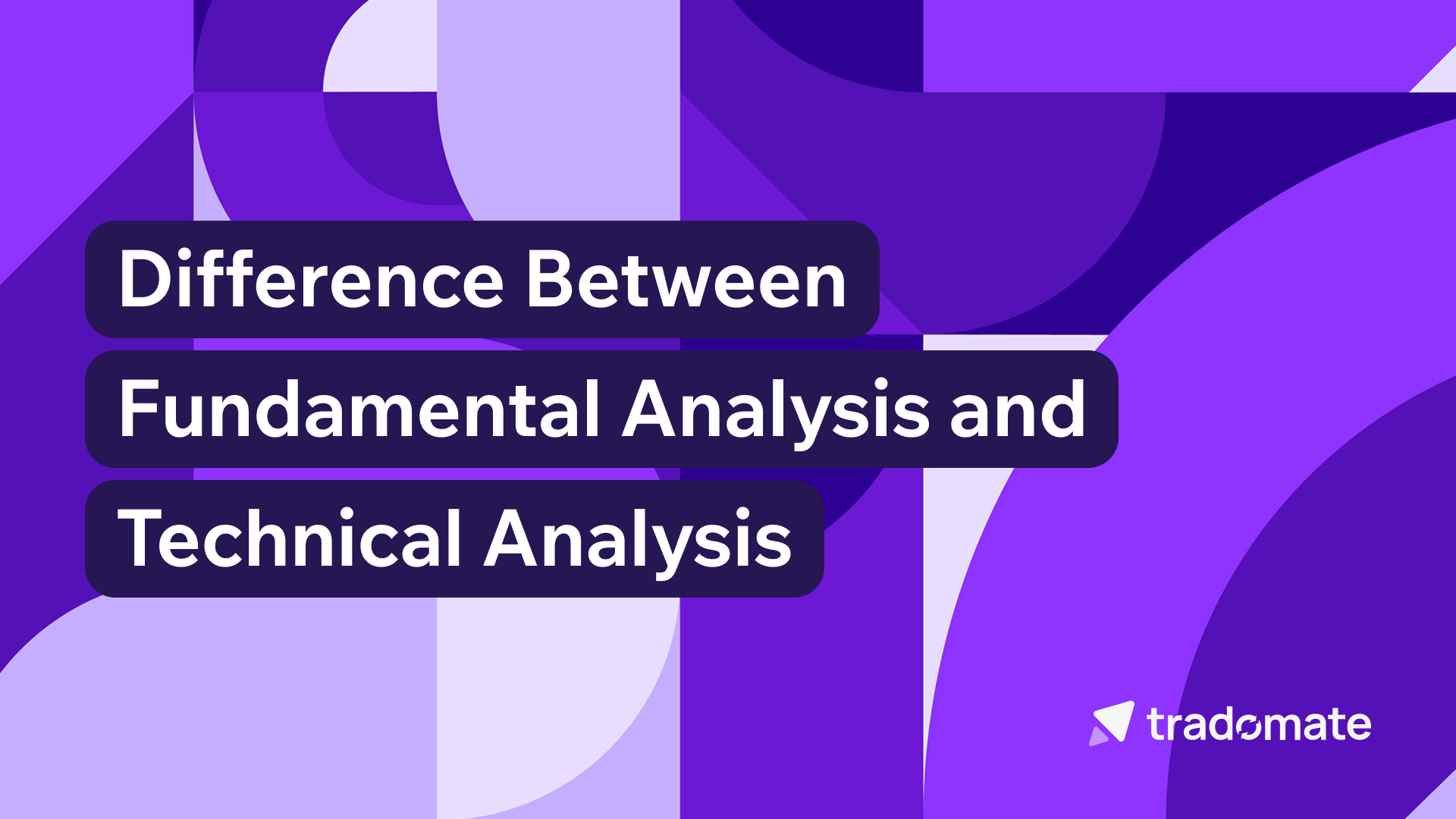Difference Between Fundamental Analysis and Technical Analysis
Understand the difference between fundamental and technical analysis of stocks. Learn how each method works and how to use technical analysis for better trading decisions.


The difference between fundamental analysis and technical analysis is one of the most discussed topics in the world of investing and trading. Both methods are used to study and evaluate stocks, but they take very different approaches. While one focuses on the value and performance of a company, the other studies price patterns and market movements.
In this guide, we’ll break it down in simple words, so you can easily understand the key differences, advantages, and when to use each method.
Fundamental analysis is a method used to find out if a stock is worth buying based on the company’s overall performance. It looks beyond the current market price and focuses on the true value of the business.
Investors use this method to find strong companies that can grow over time. If the true value of a stock (intrinsic value) is higher than the current price, the stock may be undervalued and worth buying for the long term.
Example:
If you check TCS’s profits, new projects, and long-term performance before buying its stock, you are using fundamental analysis.
Technical analysis does not study the company itself. Instead, it studies price movement, market sentiment, and trends to predict future price behavior.
This approach helps traders identify when to enter and when to exit trades. Even if the company is good, the stock price does not move up in a straight line. Technical analysis helps traders catch the smaller price swings along the way.
Example
If you check the chart of HDFC Bank to see if it is oversold before buying it for a short-term bounce, you are using technical analysis.
| Point of Comparison | Fundamental Analysis | Technical Analysis |
|---|---|---|
| Approach | Studies the financial health, performance, and intrinsic value of a company. | Studies stock price charts, patterns, and market trends. |
| Goal | To find the real (intrinsic) value of a stock. | To predict future price movements. |
| Timeframe | Long-term focused (months to years). | Short-term focused (days, weeks, or even minutes). |
| Tools Used | Financial statements, P/E ratio, EPS, ROE, industry, and economy analysis. | Charts, candlesticks, RSI, MACD, moving averages, Bollinger Bands. |
| Decision Making | Helps investors decide whether to buy and hold a stock. | Helps traders find entry and exit points. |
| Focus Area | Company’s earnings, revenue, debt, management, and market position. | Stock price action, trading volume, and market psychology. |
| Users | Long-term investors and value investors. | Traders, swing traders, and intraday traders. |
To understand both approaches better, let’s explore the details of fundamental analysis first.
Imagine you want to invest in Reliance Industries. You check its annual reports, profit growth, debt levels, and future projects. If the company shows strong performance and the stock price is reasonable, you might invest for the long term.
Next, let’s look at technical analysis in detail to understand it better.
Imagine a trader looks at Infosys stock. The RSI shows the stock is oversold, and the chart shows a strong support level. The trader buys the stock, hoping for a short-term bounce.
Deciding between fundamental vs technical analysis depends on your goals.
The advantages of fundamental analysis are as follows:
The advantages of technical analysis are as follows:
Even though both are powerful, they have limitations.
Many beginners ask: How to do technical analysis of stocks? Here are simple steps:
Choose a stock and open its price chart.
Select a time frame (daily, weekly, or hourly).
Use candlestick charts for better clarity.
Add indicators like moving averages, RSI, or MACD.
Look for support and resistance levels.
Confirm signals with trading volume.
Always set a stop-loss to reduce risks.
At Tradomate, we understand that traders need the right assets at the right time. Our platform offers a smart AI-powered screener that helps filter opportunities based on your trading style, risk level, and strategy.
Simply type your conditions in your natural language whether you’re screening stocks through fundamentals, technicals, or a blend of both and our screener does the heavy lifting for you. It interprets what you’re looking for, converts it into precise criteria, and instantly surfaces the assets that fit your trading thesis. Learn how to use screener here.
Not only can you screen stocks, but you can also backtest your entire screen on historical data to build conviction in your trading strategy. For more information, click here.
The difference between fundamental analysis and technical analysis lies in their approach. Fundamental analysis focuses on company value and long-term growth, while technical analysis studies price patterns for short-term gains.
The best method depends on your trading or investing style. Long-term investors may prefer fundamental analysis, while traders often rely on technical analysis, and many smart investors combine both.
By learning both methods, you can improve your decision-making and grow your wealth with confidence.
To know more, explore Tradomate’s expert trading blog section.
Other blog articles



Start your seamless trading journey now and experience the power of our comprehensive trading solutions.